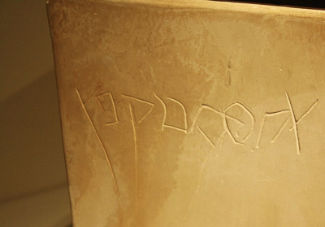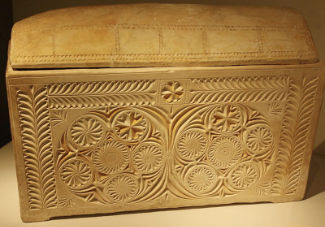This week we are looking at the evidence of the crucifixion of Jesus Christ. Today we look at something quite remarkable: Caiaphas’ ossuary.
We are not taking evidence from the Bible; I said on Monday there are many sceptics who do not believe this account. So instead I am taking time this week to show other evidence that supports what I believe to be the crucifixion of Jesus Christ.
Caiaphas’ Ossuary
On 2nd December 1990, a new park was being constructed in Jerusalem. As the workers, using modern construction equipment, dug down they soon stopped and realised they had found something special. A long-forgotten ceiling collapsed revealing a room deep in the earth.
Archaeologist Zvi Greenhut arrived on the scene to see what the construction workers stumbled upon. It was evident they had discovered a burial tomb. Detailed examination followed and the date they arrived at was the same time as when Jesus lived on earth. Imagine a find of 2,000 years ago! This find also discovered an ossuary which is a box that would hold a person’s bones.
This was common in Jesus’ time. An ossuary box was used where burial space is scarce. A body is first buried in a temporary grave, then after some years the skeletal remains are removed and placed in an ossuary.
As they looked inside they found the bones of two babies, one of an adolescent child, a teenage boy, an adult woman, and a man about 60 years of age. Quite a find you will agree of what appears to be a whole family.
What they also found was on the outside of the ossuary was an inscription in the Aramaic language saying, “Joseph son of Caiaphas.”
Now the New Testament describes Caiaphas as one of the primary individuals involved in the crucifixion of Jesus.
Remember Josephus who we quoted yesterday? No? Well, he was the first-century historian, a Jew, not a Christian and Josephus identifies the high priest at the time of Jesus as not only Caiaphas but “Joseph Caiaphas.”
Josephus also tells us, additionally, that Caiaphas was the Jewish high priest from 18 to 36 AD (Jewish Antiquities 18:35).
Further information apart from the Bible helps us to establish the right name at the right time. Josephus later refers to him as “Joseph who was called Caiaphas of the high priesthood” (Jewish Antiquities 18:95).
It stands to reason that the 60-year-old man found in the ossuary is the high priest involved in the crucifixion of Jesus.
I personally believe the crucifixion of Jesus to be the most important event of human history and this ossuary really blesses me in that it holds the bones of a 60-year-old man who 2,000 years ago led the charge to put Jesus on the cross.
Without a doubt, the ossuary strengthens the historical reliability of the cross by supporting the existence of one of its central characters.


Further investigations tomorrow.
Stay safe and blessed.


Join the discussion One Comment